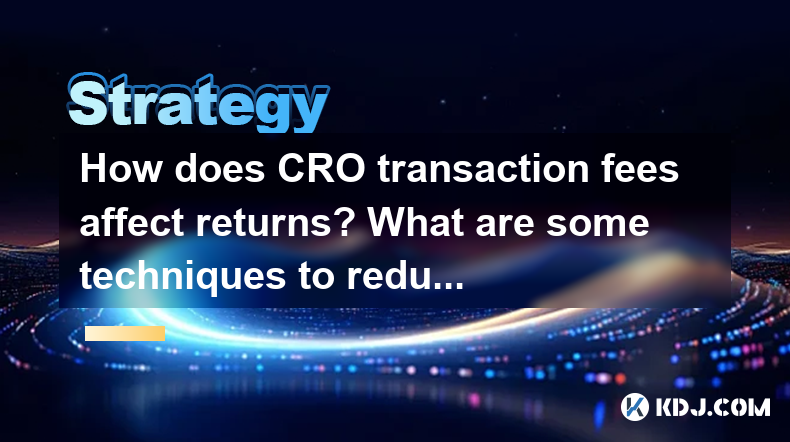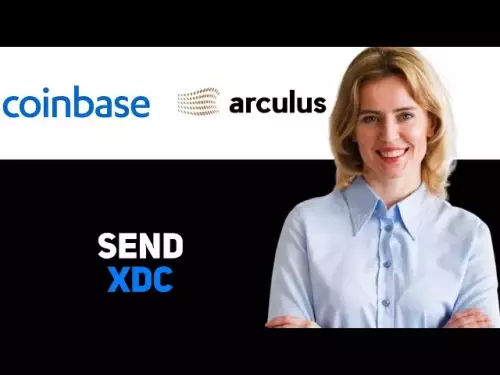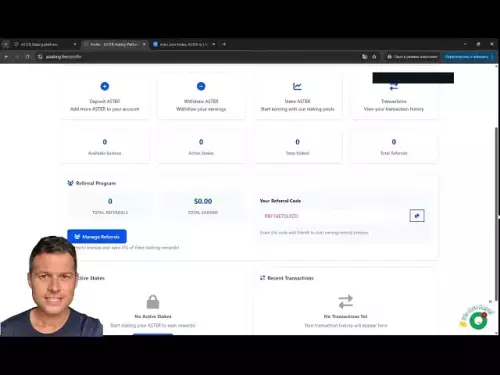-
 bitcoin
bitcoin $111375.742210 USD
-8.60% -
 ethereum
ethereum $3780.311592 USD
-13.98% -
 tether
tether $1.001299 USD
0.07% -
 bnb
bnb $1093.375857 USD
-13.01% -
 xrp
xrp $2.339375 USD
-16.91% -
 solana
solana $185.029017 USD
-16.69% -
 usd-coin
usd-coin $1.000230 USD
0.04% -
 tron
tron $0.319531 USD
-5.16% -
 dogecoin
dogecoin $0.190791 USD
-23.59% -
 cardano
cardano $0.638663 USD
-21.82% -
 ethena-usde
ethena-usde $0.998483 USD
-0.20% -
 hyperliquid
hyperliquid $37.741486 USD
-14.68% -
 chainlink
chainlink $17.229851 USD
-22.17% -
 stellar
stellar $0.316546 USD
-16.74% -
 bitcoin-cash
bitcoin-cash $507.861193 USD
-13.18%
How does CRO transaction fees affect returns? What are some techniques to reduce costs?
CRO transaction fees can significantly reduce returns, but using the Crypto.com Visa Card, batching transactions, and staking CRO can help minimize these costs.
May 03, 2025 at 03:35 am

When engaging with cryptocurrencies like CRO (Crypto.com Coin), understanding transaction fees is crucial as they can significantly impact your overall returns. CRO transaction fees, like those of other cryptocurrencies, are costs incurred every time you conduct a transaction on the Crypto.com chain. These fees can eat into your profits, especially if you are a frequent trader or investor. This article will explore how CRO transaction fees affect returns and provide detailed techniques to reduce these costs.
Understanding CRO Transaction Fees
CRO transaction fees are charges levied for processing transactions on the Crypto.com blockchain. These fees are typically calculated based on the network's current congestion and the complexity of the transaction. The fee structure can be broken down into two main components: the gas fee and the network fee. The gas fee is the cost of executing the transaction, while the network fee is the cost associated with the transaction being included in a block and processed by the network.
The impact of these fees on returns can be substantial, particularly for those who engage in frequent trading or smaller transactions. For instance, if you are making numerous small transactions, the cumulative effect of the fees can erode your profits significantly. On the other hand, for larger transactions, the percentage impact of the fee might be less noticeable, but it still represents a cost that needs to be factored into your overall investment strategy.
How CRO Transaction Fees Affect Returns
The effect of CRO transaction fees on returns can be understood through several key points:
Reduction in Net Profit: Every transaction fee reduces the net amount of CRO you receive. If you are buying or selling CRO, the fee will directly reduce the amount of CRO you end up with after the transaction. For example, if you buy 100 CRO and the transaction fee is 1 CRO, you effectively receive 99 CRO.
Compounding Effect: For investors who hold CRO for the long term, the fees can have a compounding effect. If you are reinvesting your returns, the fees paid on each transaction will reduce the amount available for reinvestment, which can lead to a lower overall return over time.
Trading Frequency: The more frequently you trade, the more you will pay in transaction fees. Active traders need to be particularly mindful of these costs, as they can quickly add up and significantly impact profitability.
Transaction Size: The size of the transaction also plays a role. Smaller transactions are disproportionately affected by fees because the fee represents a larger percentage of the transaction value. Conversely, larger transactions may have a lower percentage impact, but the absolute amount paid in fees can still be significant.
Techniques to Reduce CRO Transaction Fees
There are several strategies you can employ to minimize the impact of CRO transaction fees on your returns:
Use the Crypto.com Visa Card: One of the most effective ways to reduce transaction fees is by using the Crypto.com Visa Card. Cardholders can enjoy reduced or even zero transaction fees on certain transactions, depending on the card tier. To take advantage of this:
- Sign up for a Crypto.com account if you haven't already.
- Apply for the Crypto.com Visa Card.
- Choose the card tier that best suits your needs, keeping in mind that higher tiers offer more benefits, including lower transaction fees.
- Use the card for transactions to benefit from the reduced fees.
Batch Transactions: Instead of making multiple small transactions, consider batching them into fewer, larger transactions. This can help reduce the total amount of fees you pay. For example, if you need to send CRO to multiple addresses, you can consolidate these into a single transaction with multiple outputs.
Timing Your Transactions: The Crypto.com network's congestion can affect transaction fees. By timing your transactions during periods of lower network activity, you can potentially pay lower fees. You can use tools like blockchain explorers to monitor network congestion and plan your transactions accordingly.
Staking CRO: Staking CRO can provide you with benefits such as reduced transaction fees. By locking up your CRO in the Crypto.com ecosystem, you can earn rewards and enjoy lower fees on transactions. To stake CRO:
- Navigate to the Crypto.com app or website.
- Go to the 'Stake' section.
- Choose the amount of CRO you want to stake and the staking period.
- Confirm the staking transaction, and you will start earning rewards and enjoying reduced fees.
Using the Crypto.com Exchange: Trading on the Crypto.com Exchange can also help you save on fees. The exchange offers competitive fee structures, and by using CRO to pay for fees, you can enjoy further discounts. To trade on the Crypto.com Exchange:
- Sign up for a Crypto.com Exchange account.
- Deposit CRO or other supported cryptocurrencies into your exchange wallet.
- Use CRO to pay for trading fees to benefit from the discount.
Monitoring and Adjusting Your Strategy
To effectively manage the impact of CRO transaction fees on your returns, it's important to continuously monitor and adjust your strategy. Keep track of the fees you are paying and assess whether your current approach is cost-effective. If you find that fees are significantly impacting your returns, consider revisiting the techniques mentioned above and adjusting your strategy accordingly.
For instance, if you notice that your transaction fees are high due to frequent small transactions, you might want to start batching your transactions. If you are not already using the Crypto.com Visa Card, consider applying for one to take advantage of the reduced fees. Similarly, if you are not staking CRO, you might want to start doing so to benefit from the reduced fees and additional rewards.
Conclusion
Understanding and managing CRO transaction fees is essential for maximizing your returns in the cryptocurrency market. By employing strategies such as using the Crypto.com Visa Card, batching transactions, timing your transactions, staking CRO, and trading on the Crypto.com Exchange, you can significantly reduce the impact of these fees on your investment returns. Continuously monitoring and adjusting your approach will help ensure that you are making the most of your CRO investments.
Frequently Asked Questions
Q1: Can I avoid CRO transaction fees entirely?While it is not possible to avoid CRO transaction fees entirely, you can minimize them by using the strategies outlined in this article, such as using the Crypto.com Visa Card, batching transactions, and staking CRO.
Q2: How do I know if I am paying too much in CRO transaction fees?You can determine if you are paying too much in CRO transaction fees by tracking your transaction history and calculating the total fees paid over a period. If the fees are significantly impacting your returns, it may be time to adjust your strategy.
Q3: Does the Crypto.com Visa Card work for all types of transactions?The Crypto.com Visa Card can be used for a wide range of transactions, including online purchases, in-store purchases, and ATM withdrawals. However, the specific benefits and reduced fees may vary depending on the card tier and the type of transaction.
Q4: Is staking CRO risky?Staking CRO involves locking up your tokens for a period, which means you cannot use them during that time. While staking itself is not inherently risky, it does come with the risk of opportunity cost, as you cannot trade or use the staked CRO until the staking period ends. Always consider your investment goals and risk tolerance before deciding to stake.
Disclaimer:info@kdj.com
The information provided is not trading advice. kdj.com does not assume any responsibility for any investments made based on the information provided in this article. Cryptocurrencies are highly volatile and it is highly recommended that you invest with caution after thorough research!
If you believe that the content used on this website infringes your copyright, please contact us immediately (info@kdj.com) and we will delete it promptly.
- Bittensor (TAO): Super Bullish Signals Point to Potential 2x Rally
- 2025-10-11 10:25:12
- Silver Price Correction: Navigating the Dip & Identifying Key SEO Keywords
- 2025-10-11 10:25:12
- MoonBull: The Crypto Meme Coin Promising 1000x Gains?
- 2025-10-11 10:30:01
- Crypto Payroll Revolution: Stablecoins, Altcoins, and the Future of Salary Payments
- 2025-10-11 10:30:01
- Decoding Crypto Trends: XRP's Bitcoin Dream, BlockDAG's Rise, and the PayFi Revolution
- 2025-10-11 10:30:01
- Amina Bank & Polygon: Institutional Staking with a Sweet 15% Yield
- 2025-10-11 10:30:15
Related knowledge

Practical parameter settings for a Bitcoin multi-timeframe moving average system
Sep 18,2025 at 10:54pm
Optimizing Timeframe Combinations for Bitcoin Trading1. Selecting appropriate timeframes is crucial when building a multi-timeframe moving average sys...

How can I filter out false breakouts in Dogecoin high-frequency trading?
Sep 22,2025 at 01:00am
Understanding False Breakouts in Dogecoin Trading1. A false breakout occurs when Dogecoin's price appears to move beyond a defined support or resistan...

Techniques for identifying tops and bottoms in the Bitcoin on-chain NVT model
Sep 20,2025 at 07:54pm
Understanding the NVT Model in Bitcoin Analysis1. The Network Value to Transactions (NVT) ratio is often described as the 'P/E ratio' of the cryptocur...

What does the surge in open interest in Bitcoincoin futures mean?
Sep 20,2025 at 11:18pm
Understanding the Surge in Dogecoin Futures Open Interest1. A surge in open interest within Dogecoin futures indicates a growing number of active cont...

How can I use the Ethereum USDT premium to gauge market sentiment?
Sep 18,2025 at 11:55pm
Understanding the Ethereum USDT Premium1. The Ethereum USDT premium refers to the price difference between USDT (Tether) traded on Ethereum-based plat...

What should I do if Ethereum staking yields decline?
Sep 20,2025 at 06:18am
Understanding the Causes Behind Declining Ethereum Staking Yields1. The Ethereum network transitioned to a proof-of-stake consensus mechanism with the...

Practical parameter settings for a Bitcoin multi-timeframe moving average system
Sep 18,2025 at 10:54pm
Optimizing Timeframe Combinations for Bitcoin Trading1. Selecting appropriate timeframes is crucial when building a multi-timeframe moving average sys...

How can I filter out false breakouts in Dogecoin high-frequency trading?
Sep 22,2025 at 01:00am
Understanding False Breakouts in Dogecoin Trading1. A false breakout occurs when Dogecoin's price appears to move beyond a defined support or resistan...

Techniques for identifying tops and bottoms in the Bitcoin on-chain NVT model
Sep 20,2025 at 07:54pm
Understanding the NVT Model in Bitcoin Analysis1. The Network Value to Transactions (NVT) ratio is often described as the 'P/E ratio' of the cryptocur...

What does the surge in open interest in Bitcoincoin futures mean?
Sep 20,2025 at 11:18pm
Understanding the Surge in Dogecoin Futures Open Interest1. A surge in open interest within Dogecoin futures indicates a growing number of active cont...

How can I use the Ethereum USDT premium to gauge market sentiment?
Sep 18,2025 at 11:55pm
Understanding the Ethereum USDT Premium1. The Ethereum USDT premium refers to the price difference between USDT (Tether) traded on Ethereum-based plat...

What should I do if Ethereum staking yields decline?
Sep 20,2025 at 06:18am
Understanding the Causes Behind Declining Ethereum Staking Yields1. The Ethereum network transitioned to a proof-of-stake consensus mechanism with the...
See all articles










































































